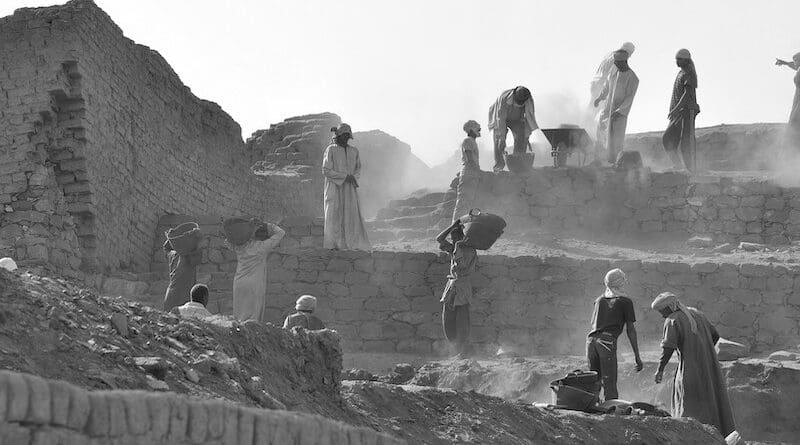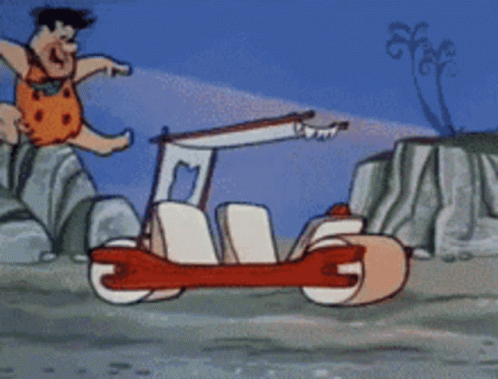Anthropology
Related: About this forumThe Surprising Ways Inventions And Ideas Spread In Ancient Prehistory - OpEd

September 10, 2024
By Brenna R. Hassett
You can learn a lot about humanity from the first technological revolutions of more than 10,000 years ago.
The human capacity for invention is unparalleled. We have developed technologies that have allowed us to survive and thrive far beyond the ecological niches that constrained our ancestors. While our innovation has allowed us to break loose from the constraints of our home continent, Africa, and even our home planet, the actual way in which our species adopts new technologies remains a subject of huge debate among those scientists who study the past. Does one hominid ancestor start to shuffle upright, and the rest follow? Does the first human to loop a piece of string through a shell bead inspire the rest of the species to create the world’s first jewelry? Or do different animals take up the same new adaptation at different times, because it solves a problem that appears in many places?
We know that in some of our closest living relatives, the primates, new technical skills are passed on through direct learning. Macaques, in particular, are responsible for innovative behaviors that have been transmitted through their societies by individuals who have seen and observed them and then adopted them as their own. This is true of behaviors as varied as “hot tubbing” by the macaques of Japan’s northern Hokkaido island and the habit of dipping sweet potatoes in the sea to “salt” them developed by macaques on Koshima island further south.
Many of the technological innovations that have had the greatest impact on our species were first seen about 10,000 to 15,000 years ago in a region that archaeologists refer to as the “Fertile Crescent.” The region encompasses a swathe of land crossing the countries between the easternmost Mediterranean Sea and the Sinai, Arab, and Syrian deserts and up into the Zagros Mountains of what is now Iran. It is a region of famous firsts in terms of radical changes to our species lifestyle: settling down, cultivating plants, and taming the animals we eat are all first attested in this strip of relatively abundant land.
It was along the shores of the Sea of Galilee where we have the first evidence of the wild ancestors of today’s wheat being exploited more than 20,000 years ago, at the site of Ohalo II, reconstructed from the microscopic remains of shattered seeds still clinging to a grinding stone after millennia. From 15,000 years ago, in a corridor stretching up and down the eastern Mediterranean we call the Levant, there comes the first signs of a new way of life for humans; one that involves staying in the same groups and homes all year round, rather than following food around the landscape as we had done for the 300,000 years prior. Those seeds from Ohalo II have grown into entirely new shapes by the time they are uncovered in these new inventions, called villages, and by around 9,000 years ago this new human-friendly type of wheat was well on its way to becoming our first domesticate (domesticate that wasn’t a dog—those we have had for probably 30,000 years). Meanwhile, over the last 10,000 years or so, goats, sheep, pigs, and eventually cattle were all brought into these new human habitations, and bred into the shapes that suit us rather than them: better to eat or easier to manage.
More:
https://www.eurasiareview.com/10092024-the-surprising-ways-inventions-and-ideas-spread-in-ancient-prehistory-oped/

Goonch
(3,773 posts)
duncang
(2,789 posts)I’m sure they didn’t go from hunter gatherer straight to building that or the other sites around it. There are about 6 other sites in the area archeologists are looking at. As far as I know they haven’t found simple standing stones in the area yet. Going from nothing to carved stones seems unlikely. Especially the size of the stones. Normal progression other places are smaller stones or wood going to larger ones. So there’s a lot missing from our understanding of early people in the area.
I’ve heard it described as the beginnings of village life. But there had to have been a smaller settlements long before. They’re also not sure if Gobekli Tepe had cultivated grain or if it was just wild.
wnylib
(23,653 posts)and large complexes that are missing.
I was taught that agriculture led hunter-gatherers to a sedentary lifestyle, but I suspect that animal habitats and extended families played a role in settlements before agriculture did. Agriculture allowed larger settlements because it could feed larger numbers of people in one place, but semi-permanent settlements of extended families (clans) in areas where game could be consistently hunted or trapped most likely preceded the larger villages and cities that developed with agriculture.
Following game animals led to the domestication of herd animals in areas of the Middle East and southeastern Europe. Bands of herders had semi-permanent villages, were connected through clan relationships, and moved their herds seasonally for grazing.
Larger, more permanent settlements were possible when agriculture and the domesticated animals were combined in a lifestyle. When both meat and crops were available in one area, people could stay put, start building larger homes and ceremonial sites, and develop more varied and specialized occupations.
In pre-Columbian North America, settlements that eventually grew into large villages and cities often began as trade and ceremonial sites that drew people from nearby regions, not always from the same ethnic identity.
The spread of maize agriculture played a role, but the availability of fish led to weirs and ponds that ensured a supply of animal food. Careful tending of habitats encouraged the availability of nearby large game (deer) to hunt and small game (rabbits, beavers) to trap. In the Midwest, where large stone building blocks were not available, the people built large earthen monuments and ceremonial mounds based on astronomy, with homes for political and ceremonial leaders. Residential homes for the general population were outside of the ceremonial centers. Artifacts from civilization sites like Cahokia include carved stone pipes, copper tools and jewelry, shell jewelry, obsidian knives, pottery, small statues, etc. The population was around 20,000.
duncang
(2,789 posts)Even here along the gulf coast you can find ancient Clovis points and other stone tools. There have been more Clovis points found at McFadden beach than anywhere else in Texas along with mammoth bones and other animals just laying on the ground. You know there had to be camps in the area. But as far as I know none have been found. Smaller sites early sites don’t get the same attention they deserve.
I was a member of the Houston gem and mineral society. Went on a couple trips with them. One was on private land near Jasper Texas. My wife found a really nice fossilized palmwood scraper. All I got was a bad back trying to get 4 chunks of fossilized tree trunks to the car. I still get emails from them. Every so often they send a link to live talks from archeologists, paleontologists, etc. pretty interesting hearing it directly from them.